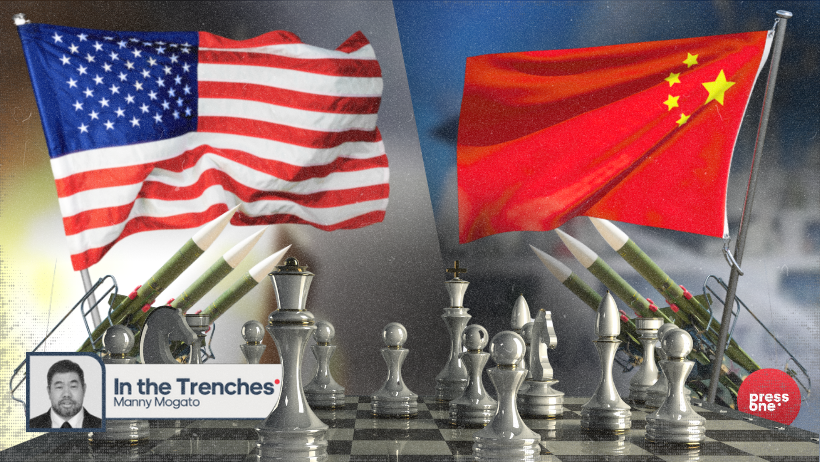
Earlier this month, a spokesman for China’s defense ministry slammed its rival, the United States, for deploying its new “Typhoon” missile launcher system in the northern Philippines.
China said the new intermediate-range missile system, which has remained in the Philippines for the last three months, has “brought huge risks of war into the region.”
Beijing’s “grave concern” about an intermediate-range missile system on its doorstep has solid basis. It has a range of over 1,500 kilometers.
From the northern Philippines, nuclear and conventional Standard SM-6 or a Tomahawk missile can hit targets with greater accuracy and precision, to as far as Shanghai and southern China.
China’s foreign ministry spokesman said the United States’ actions were escalating tensions in the region and heightening the potential for ”misjudgment and miscalculation.’’
China has also urgently called on the United States to consider other nations’ security concerns, cease provoking military conflicts, halt actions destabilizing the region’s peace and security, and take immediate steps to reduce strategic risks.
However, Defense Secretary Lloyd Austin dismissed China’s concerns, saying the deployment of the intermediate-range missile system would promote greater peace and stability in the region.
It could enhance the defense capability of both the United States and the Philippines in the face of the increasing Chinese coercive activities in the South China Sea.
From the US Army’s 1st Multi Domain Task Force (MDTF) base in Joint Base Lewis Mc Chord in Washington State, the newly developed intermediate-range missile system was shipped to the Philippines for a bilateral exercise, Salaknib, in April.
It has remained in a local army base in northern Luzon as the Philippine Army’s 7th Infantry Division and the US Army’s 25th Infantry Division, part of the 1st MDTF, held the second phase of Salaknib drills in the first week of June.
However, there were no media reports that the Typhoon missile system was test-fired during the drills.
In April, the US Army tested how the missile system could be moved around in rough mountain terrain in northern Luzon and how swiftly it could be deployed outside the continental United States.
The US Army also tried to find out how the missile system would work in a tropical environment, particularly near the sea.
The Philippine military said the United States did not bring conventional and nuclear warheads for the missile launcher system.
The Philippines and the United States said the presence and possible integration of the intermediate-range missile system into the country’s air defense system could boost the minimum credible defense capability, particularly its anti-access and area denial (A2AD) strategy.
There could be some adverse effects on the deployment of the Typhoon missile launcher in the northern Philippines.
For one, it could be a potential magnet for an attack from known US adversaries like China and North Korea.
Beijing’s DongFeng (DF-21), a medium-range ballistic missile known as the “carrier killer,” has a range that could hit targets in the Philippines.
China could also step up its coercive activities in the West Philippine Sea to put pressure on the Philippines to remove the Typhoon missile system.
China’s rhetoric would intensify, particularly its foreign influence operations on social media platforms in the Philippines.
The disadvantages could outweigh the advantages of the presence of the Typhoon missile system in the country.
It could also escalate the regional arms race, making the Philippines the most vulnerable state in case a shooting war erupts in this part of the world.
Some people have been warning that the next Ukraine could be the Philippines, and not Taiwan, because the Marcos government has increasingly become pro-United States, turning its back on the Association of Southeast Asian Nations (ASEAN) and abandoning its non-aligned status.
Early in his administration, President Ferdinand Marcos Jr vowed not to allow offensive weapons systems in the country that could threaten US adversaries.
Other US allies, like Japan and South Korea, have turned down Washington’s plan to deploy its Typhoon missile system because it could anger China.
What had happened to Marcos’ foreign policy to pursue a non-aligned stance of ”an enemy to no one and a friend to all”?
It has become a pawn in the big powers game by allowing the US to deploy the Typhoon missile system.
It has also become easy for the Americans to ship conventional and nuclear warheads to the Philippines.
Although the Philippines has long banned the presence of nuclear weapons, based on its 1987 Constitution and l the ASEAN Nuclear Weapons Free Zone treaty, it has no capability to detect nuclear weapons in US planes and ships.
The US would neither confirm not deny the presence of nuclear weapons on its vessels and aircraft.
The Philippines could be putting the region as a whole and itself in particular on the brink of nuclear war.
The Marcos government must reconsider the deployment of the Typhoon missile system.
If the Americans only wanted to test the logistics and movement of the offensive weapons platform, it had accomplished its objective.
But Manila should not allow its long-term deployment in the country. The risks are not worth it.
0 Comments